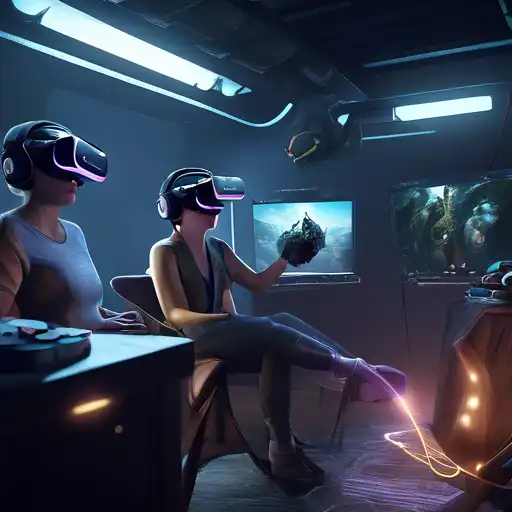Introduction to Virtual Reality Creation
Virtual Reality (VR) has transformed from a futuristic concept into a tangible, immersive experience that captivates users worldwide. Creating immersive VR experiences requires a blend of creativity, technical skill, and an understanding of user engagement. This guide will walk you through the essential steps to craft VR worlds that enchant and engage.
Understanding the Basics of VR Design
Before diving into creation, it's crucial to grasp the fundamentals of VR design. Unlike traditional media, VR places the user inside the experience, making user interface (UI) and user experience (UX) design paramount. Considerations such as motion sickness, interactivity, and environmental realism play significant roles in the development process.
Key Components of VR Experiences
- Hardware: Choosing the right VR headset and controllers is the first step. Options range from high-end systems like the Oculus Rift to mobile solutions like Google Cardboard.
- Software: Development platforms such as Unity and Unreal Engine offer robust tools for VR creation.
- Content: The narrative and visual elements must be compelling and designed to leverage VR's immersive potential.
Step-by-Step Guide to Creating Your VR Experience
Creating a VR experience involves several stages, from conceptualization to deployment. Here's a simplified overview:
- Concept Development: Define the purpose and scope of your VR experience. Whether it's for gaming, education, or training, a clear concept is essential.
- Design: Sketch out environments and interactions. Tools like Tilt Brush can help visualize spaces in VR.
- Development: Use a game engine to build your world. Incorporate interactivity and test for usability.
- Testing: Gather feedback from users to refine the experience. Pay attention to comfort and engagement levels.
- Deployment: Publish your VR experience on platforms like SteamVR or Oculus Store.
Optimizing for User Engagement
To ensure your VR experience stands out, focus on immersion and interactivity. High-quality graphics, realistic physics, and intuitive controls are key. Additionally, consider incorporating elements like haptic feedback to enhance realism.
Common Pitfalls to Avoid
- Overcomplicating controls: Keep interactions simple and intuitive.
- Ignoring user comfort: Avoid designs that may cause motion sickness.
- Neglecting performance: Optimize your experience to run smoothly on target hardware.
Future Trends in VR Development
The VR landscape is continually evolving, with advancements in AI, haptics, and wireless technology paving the way for more immersive experiences. Staying abreast of these trends will ensure your VR projects remain at the cutting edge.
Creating immersive VR experiences is a challenging yet rewarding endeavor. By following this guide and leveraging the latest tools and technologies, you can craft virtual worlds that captivate and inspire. For more insights into VR development, explore our VR Development Tools article.
